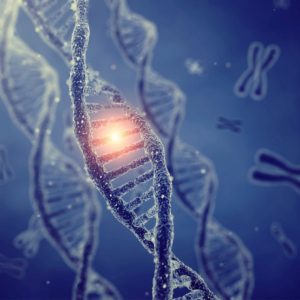Identification of a Genetic Factor Linked to Endometriosis Development and Potential Therapeutic Targets
Endometriosis is a chronic condition characterized by the growth of endometrial-like tissue outside the uterus, often leading to severe pain, infertility, and heavy menstrual bleeding. The primary treatment options currently involve hormonal medications and surgical removal of endometriosis lesions.
However, researchers have diligently explored alternative approaches, and an intriguing breakthrough has emerged. This fundamental research, conducted in laboratory settings to investigate influencing factors, necessitates extensive follow-up studies before any potential applications can be integrated into routine medical care.
Nevertheless, ongoing efforts persist behind the scenes, with numerous research teams dedicated to unraveling the mysteries of endometriosis and identifying additional therapeutic targets.
Participants in the Study:
A collaborative effort brought together scientists from Baylor College of Medicine, the University of Oxford, the University of Wisconsin-Madison, and Bayer AG, pooling their expertise to investigate and expand treatment options for endometriosis.
Study Methodology:
In this research endeavor, the pharmaceutical industry and academic institutions collaborated internationally, recognizing the substantial financial requirements of such investigations. While it is essential to consider potential conflicts of interest within the pharmaceutical industry, this research plays a crucial role in the battle against endometriosis. The synergy between the various research teams led to the revelation of significant connections [1].
The team at the University of Oxford deciphered a genetic association with endometriosis located on chromosome 7p13-15. They analyzed the DNA of families in which at least three or more women had been diagnosed with endometriosis [1].
Concurrently, the Baylor College of Medicine team corroborated this genetic link by examining the DNA of rhesus monkeys, which exhibited spontaneous endometriosis [1].
Subsequently, more extensive sequence analyses were conducted within families affected by endometriosis. During this process, the researchers identified rare variants in the NPSR1 gene, providing conclusive evidence of a genetic connection to endometriosis [1].
The Baylor team further validated these findings through similar sequence analyses in rhesus monkeys. Moreover, the study’s results received additional support from a study involving over 11,000 women, encompassing both patients with endometriosis and healthy individuals [1].
Further Research and Study Results:
One particularly intriguing finding of this study was the detection of rare variants, primarily in women in the third or fourth stage of the condition. Both human and rhesus monkey analyses identified a single gene, namely NPSR1, as a risk factor for endometriosis. This gene encodes the NPSR1 receptor, a crucial component in cellular processes. Notably, mutations in gene segments responsible for the NPSR1 receptor can also be associated with other medical conditions [2].
The researchers have made a significant breakthrough by discovering that this receptor is inhibited. This gene not only provides a potential explanation for why some women develop endometriosis while others do not but also presents a future target for non-hormonal drug development.
Preliminary results have already been provided by a team from the pharmaceutical company Bayer, who applied an NPSR1 inhibitor in cellular tests and a mouse model to block protein signaling. The outcome was remarkable: inhibiting the receptor reduced inflammation and alleviated abdominal pain, offering new hope to endometriosis patients [1, 3].
Continuation of Research:
While the study utilized DNA sequencing in both rhesus monkeys and humans to shed light on the critical genetics involved in endometriosis, these exciting findings only provide the first steps in a promising field of research. Further investigation is required to delve deeper into the mechanisms of action and the significance of genetic variants in gene modulation. For now, the NPSR1 receptor and its associated gene hold promise as a target for alleviating pain and inflammation in endometriosis. Dr. Thomas Tapmeier, one of the study’s co-authors, is committed to continuing research in this area [1, 2].
We will continue to provide updates as more results emerge.
Conflict of Interest Statement:
It is important to note that the authors and editors of this article have no affiliations or conflicts of interest concerning the article or the contributors to the study.
References
- Tapmeier TT, Rahmioglu N, Lin J, De Leo B, Obendorf M, Raveendran M, Fischer OM, Bafligil C, Guo M, Harris RA, Hess-Stumpp H, Laux-Biehlmann A, Lowy E, Lunter G, Malzahn J, Martin NG, Martinez FO, Manek S, Mesch S, Montgomery GW, Morris AP, Nagel J, Simmons HA, Brocklebank D, Shang C, Treloar S, Wells G, Becker CM, Oppermann U, Zollner TM, Kennedy SH, Kemnitz JW, Rogers J, Zondervan KT. Neuropeptide S receptor 1 is a nonhormonal treatment target in endometriosis. Sci Transl Med. 2021 Aug 25;13(608):eabd6469. doi: 10.1126/scitranslmed.abd6469. PMID: 34433639.
- Laitinen T, Polvi A, Rydman P, Vendelin J, Pulkkinen V, Salmikangas P, Mäkelä S, Rehn M, Pirskanen A, Rautanen A, Zucchelli M, Gullstén H, Leino M, Alenius H, Petäys T, Haahtela T, Laitinen A, Laprise C, Hudson TJ, Laitinen LA, Kere J (Apr 2004). “Characterization of a common susceptibility locus for asthma-related traits”. Science. 304 (5668): 300–4. doi:10.1126/science.1090010. PMID 15073379. S2CID 9149671.
- Researchers identify genetic cause of endometriosis and reveal potential drug target — ScienceDaily
- Pharmaceutical Companies and Their Influence on Scientific Research - 7. October 2023
- Identification of a Genetic Factor Linked to Endometriosis Development and Potential Therapeutic Targets - 6. October 2023
- Identification of a Genetic Factor Linked to Endometriosis Development and Potential Therapeutic Targets - 6. October 2023

